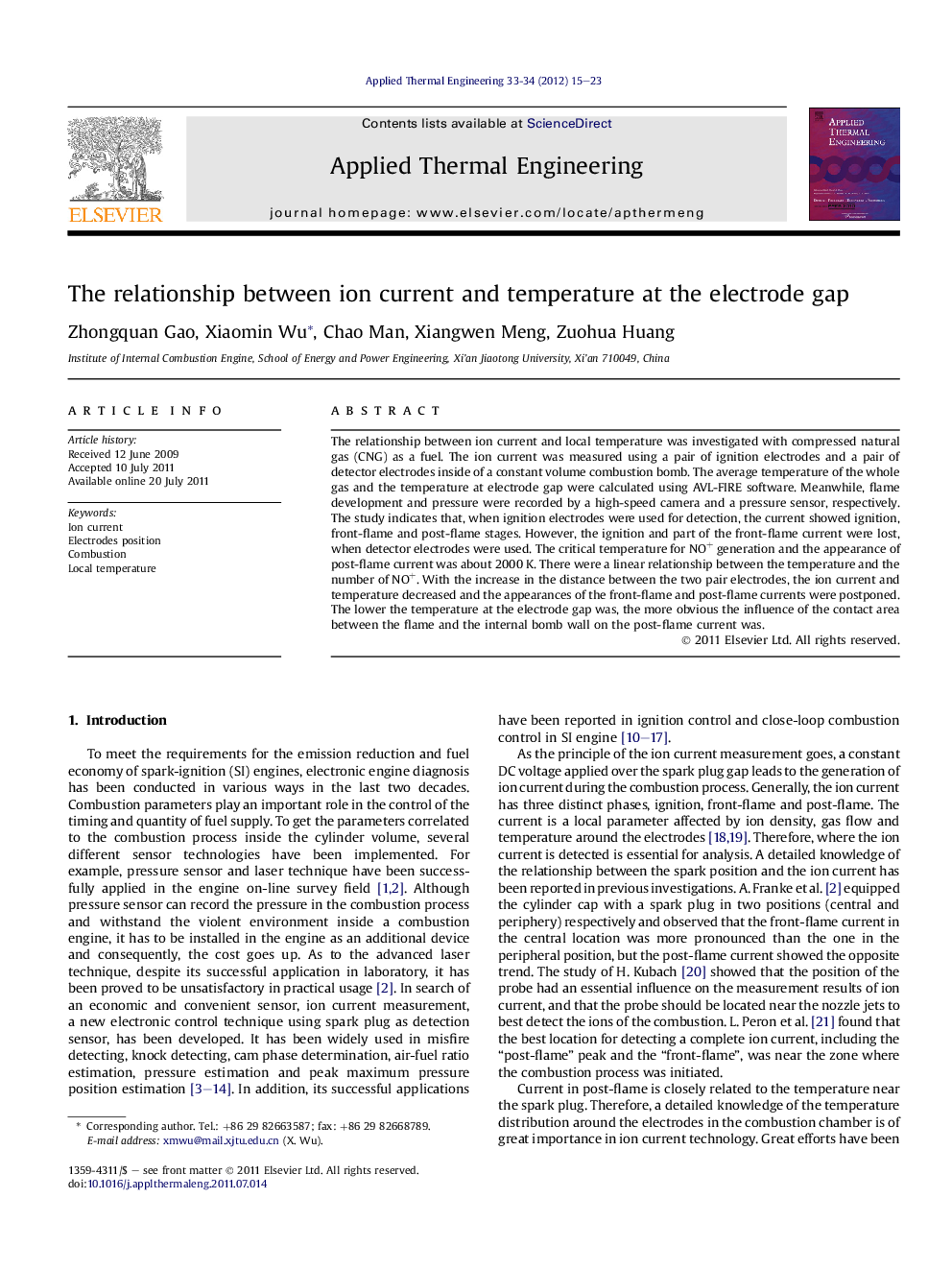| کد مقاله | کد نشریه | سال انتشار | مقاله انگلیسی | نسخه تمام متن |
|---|---|---|---|---|
| 647534 | 1457184 | 2012 | 9 صفحه PDF | دانلود رایگان |

The relationship between ion current and local temperature was investigated with compressed natural gas (CNG) as a fuel. The ion current was measured using a pair of ignition electrodes and a pair of detector electrodes inside of a constant volume combustion bomb. The average temperature of the whole gas and the temperature at electrode gap were calculated using AVL-FIRE software. Meanwhile, flame development and pressure were recorded by a high-speed camera and a pressure sensor, respectively. The study indicates that, when ignition electrodes were used for detection, the current showed ignition, front-flame and post-flame stages. However, the ignition and part of the front-flame current were lost, when detector electrodes were used. The critical temperature for NO+ generation and the appearance of post-flame current was about 2000 K. There were a linear relationship between the temperature and the number of NO+. With the increase in the distance between the two pair electrodes, the ion current and temperature decreased and the appearances of the front-flame and post-flame currents were postponed. The lower the temperature at the electrode gap was, the more obvious the influence of the contact area between the flame and the internal bomb wall on the post-flame current was.
► We design two pairs of electrode used for ignition and ion current measurement.
► We calculated the temperature field in combustion chamber during combustion.
► The ion current is illuminated according to simulation of contact between flame and wall.
► The trend of ion current is shown for different distance between ignition and measuring electrodes.
► The generation temperature for ion current post-flame zone is 2000 K.
Journal: Applied Thermal Engineering - Volumes 33–34, February 2012, Pages 15–23